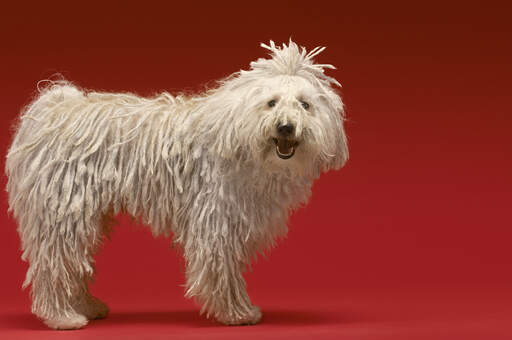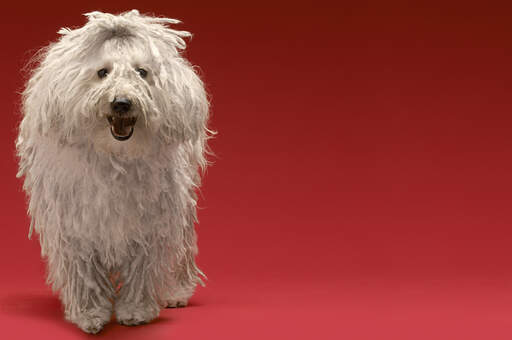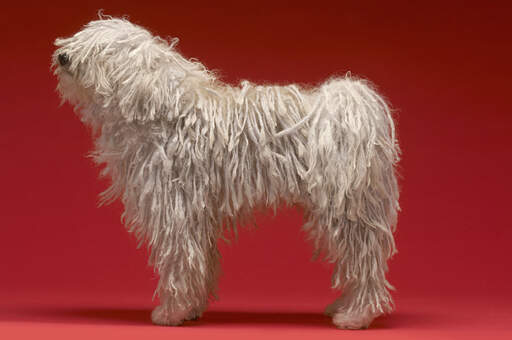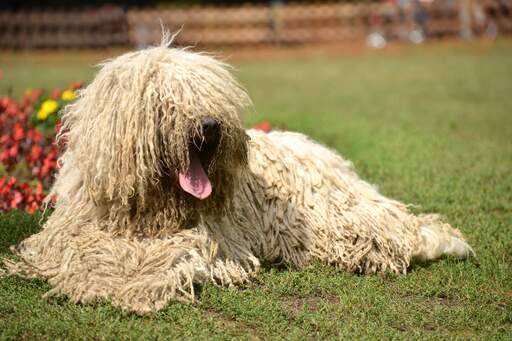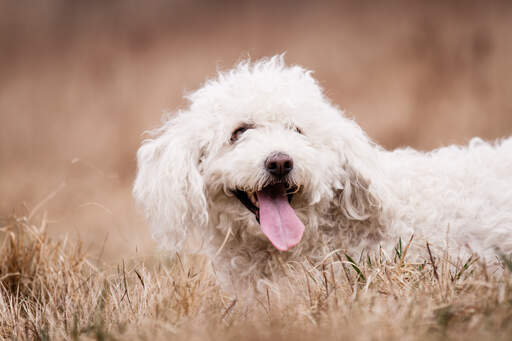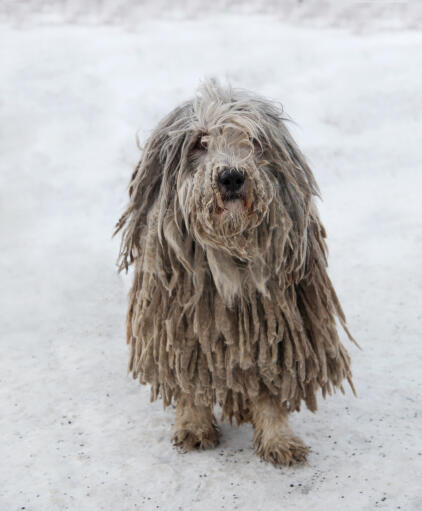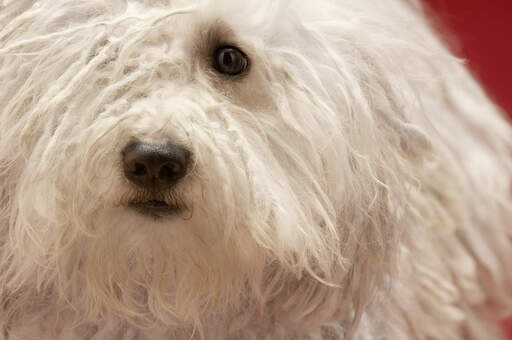Komondor Dogs







History
The Komondor was brought to Hungary in the 12th/13th century by Cumans who settled there. The name derives from Koman-dor meaning Cuman dog. They were used mainly as guard dogs to protect property and livestock and are excellent at blending in with sheep, being able to catch predators without being seen until it was too late. It is fairly common in it's native country of Hungary, but rarer in the rest of the world.
Behaviour
The Komondor is a large breed who will guard it's family and property fiercely. They make excellent guard dogs and the sheer size of them is usually enough to deter unwanted intruders. Being an independent thinker, it can be domineering and stubborn. They have a job to do and that is what they are good at; protection. They do fit into a family and will usually get on well with other pets and cats, but many have problems with other dogs, even if brought up with them. They are natural guardians of children and great with horses and other livestock. With it's tendency to want to guard it's owners, early socialisation is vital. They need lots of interaction with new people, places and situations to accustom them to different situations and people. Inviting people into the home all the time will also help as the dog gets older and should prevent problems arising later on. They can be extremely wary of strangers at first, sometimes even aggressive, but once they have met them, they will be accepted and 'permitted' into the house. Training is boring for them, so owners need to come up with inventive ways to train their Komondor. Play and treats work well, but training sessions should be kept short to keep their interest engaged. They don't fully mature until they are around 3 years old. They are not for the timid, inexperienced owner and will need firm handling, but should not be scolded too harshly. Being such a large strong dog, correct obedience is important and control vital. Komondors are very placid within the home and will lovingly sit at your feet to keep you company. They are calm and chilled when with their owners, but at night they can become restless, waking to every noise and will pace, concerned about what's going on outside. They aren't high energy dogs when out walking, but need a decent walk every day and the chance to run around. Komondors coats are unique. The dense cords only fully form by the time the dog is 2 years old. The cording takes an age to dry, sometimes up to a day, so swimming isn't ideal for the breed (or owner). The cords must be separated regularly to prevent matting, they are non shedding, but time spent caring for the coat takes considerable time and effort.
Komondors are quite a healthy breed with Canine Hip Dysplasia and gastric torsion (Bloat) being the only trouble areas
Temperament
Komondors possess a dignified and guarded temperament. Bred to guard flocks they are still very much a working breed of dog. Fiercely protective of family they will get on with other pets so long as they understand that they are part of the family.
Strangers and strange animals beware as this dog has an independent nature that means he will make his own decisions on whether you are friend or foe. In need of regular firm but fair training the Komondor is certainly a dog that needs serious research before acquiring.
Health Problems
Health problems that may affect Komondors include canine hip dysplasia (CHD), elbow dysplasia, bloat, entropion (inward rolling of eyelid which can irritate the eyeball), cataracts and some ear problems.
Breed Details
- Status: Common
- Life Expectancy: 10 - 12 years
- Weight: 45 - 60 kg
- Height: 25" - 28" +
- Rare: No
- Coat: Long - Hypoallergenic
- Grooming Requirements: Everyday
- Town or Country: Country
- Minimum Home Size: Large House
- Minimum Garden Size: Large Garden
- Breed Type: Herding
- Size: Giant
- Energy Level: Medium
- Exercise Required: Up to 1 hour

